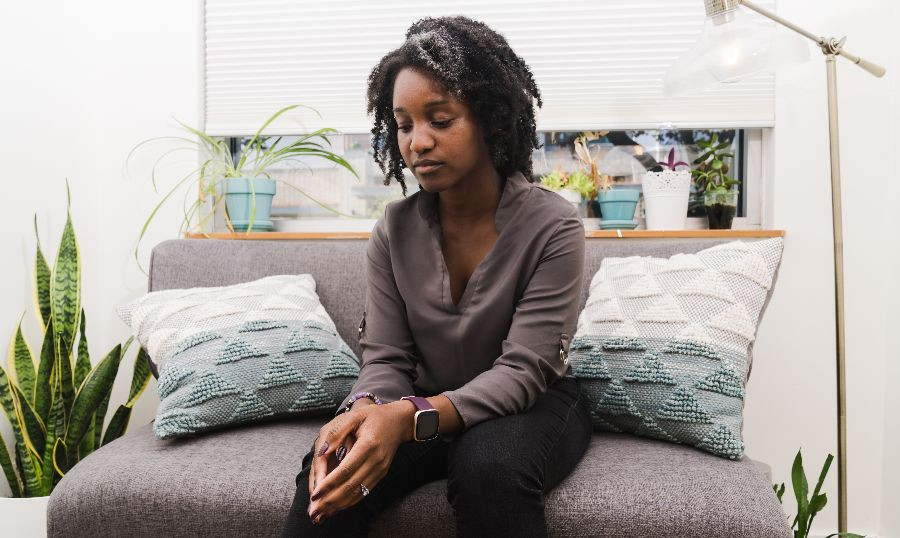Dorcas Marfo (DM): As a Black woman, I was startled by the statistics that women are 15% more liable to suffer a bad outcome and 32% more likely to die when a man instead of a woman carries out the surgery. What is this statistic trying to tell us?
Dr. Angela Jerath (DAJ): It's an extensive data set, Dorcas, about 1.3 million. And it includes all adult patients who have had twenty-one complex surgeries between 2007 and 2019. The primary stat is that 15% is looking at an outcome that combines their complications and readmissions after surgery within thirty days. The secondary stat: the 32% you quoted breaks each of those down by their complication and readmission.
So, this paper studies the interaction between the patient's sex and the surgeon's sex on that combined outcome and then on each of the other three. The main finding (after you adjust for the things that can increase someone's risk of death, such as complications or coming back into hospital) is those female patients who a male surgeon operated on had a 15% higher risk of having one of those adverse outcomes, compared to a female patient who the female surgeon performed on.
For male patients, the outcomes were similar, irrespective of whether it was a male or female surgeon. If you break those down, each of those outcomes: death, readmission, complications, that's where the 32% comes in. Female patients had a 32% higher risk of death when a male surgeon operated on them than when a female surgeon performed on them.
These statistics are what we call relative, and they're adjusted. So, absolute risks are like your overall risk of dying. Your overall risk of dying in an elective procedure in the paper is somewhere between half and one and a half percent. If you add a 30% additional risk, so let's say your baseline is 1%, it goes up to 1.3%. So that's how you conceptualize it.
DM: For female patients reading this study, what should they be concerned about since theories are not definitive?
DAJ: Yeah, I think it's essential for us to take a step back and say we don't know what's causing this right now. We've postulated what it could be in the paper. And that's going to need some further research.
Perhaps differences in how male and female physicians work, how their surgeons work, and how male and female patients communicate with their surgeons and relay new symptoms, fears, and concerns. There may be differences in communication, trust, and rapport, perhaps in how you monitor and look after your patients even after surgery. So those are theories right now. They are theories that are seen in other parts of the medical literature.
I think the main thing for women to know, in fact, all patients, male or female, is that you want to be with a physician, surgeon or any other doctor where you've got a good trusting relationship. So, you can communicate and share your ideas, thoughts, and concerns. Perhaps you don't want surgery; maybe you want something else; perhaps this isn't the right fit for you. So, to feel that you can do that is the most important thing.
And realistically, doctors don't have enough female surgeons to be able to pick and choose very well. I think we had around 18% in this paper, that's similar around the world. So hopefully, this paper will try and make more women become surgeons and feel supported. But certainly, there's not enough of them. And if you need emergency surgery, you really can't choose; no one can.
DM: As you mentioned, with a small percentage of female surgeons, the numbers slim down when we start to look at female surgeons of colour and the implications that arise from that. Can you touch on what this means for female patients of colour, especially since you mentioned that it’s ideal for patients in general to find a good trusting relationship with their physician/surgeon?
DAJ: We don't have good enough race data; we have some, but it was not good enough to use in this data set. So hence, we haven't recorded any race information. That's undoubtedly an area we need to step into.
There is what we know from other areas of medicine, not necessarily surgery, which is that there is some relationship between the race of your patient and the race of the physician, where the patient feels more satisfied and perhaps the communications are different or better. So, there are a couple of references at the end of this article, which tunes into that.
If your physician is a different race from you, communicating in a way that that patient understands can perhaps overcome some of those issues because I think patients want to feel and see that they are with someone who maybe has some similarities. You know, it could be beliefs, it could be appearance, or it could be communication style. So, I suspect there will be more data going into the race between patients, physicians, and surgeons. Analyzing it in big data sets is not necessarily easy, but we don't have a lot of physicians of Afro Caribbean backgrounds.
DM: It's well-needed because it's still a real fear when we look at racialized communities, like the Black community and their connection to medical negligence. The fear of physicians not knowing how to deal with their body type, making it out alive, waking up with further complications are all challenges that surface for these vulnerable groups. So what can be done to analyze and possibly streamline solutions?
DAJ: Yeah, absolutely, and I think you hit the nail on the head. I believe some racial, or different racial groups communicate differently. They might be coming into the doctor's office with other fears, some preconceived ideas, perhaps some people feel more intimidated. That's probably going to be affected by where you are in terms of your life as well. We need to analyze it and see how it's affecting outcomes because if communication, trust, and decision-making are different amongst different people, then that's something we need to learn in the medical community. How can we better do this and be more sensitive to people coming in, perhaps with a different set of values? Because if you can get someone, they're more likely to trust you, be compliant, be truthful. And you know, it's a partnership. You're more likely to get more out of them and they're more likely to get more out of you.
DM: Where do we go from here? Where does the onus of responsibility lie?
DAJ: Yeah, I think the next stage is to dive into some other theories. So, we need to understand the differences in practice style between male and female surgeons and male and female patients. And how does race play into this? What is different that women in this paper are doing that we can all learn from? You know, are they more meticulous? We know that they take a bit more time with patients. Is that time being well spent? Is it improving outcomes? Are they interacting with their team and other medical teams better when a complication happens after surgery, so they get on top of it more quickly?
And, you know, if we can find a set of attributes. That's probably going to be different with people of different racial backgrounds. That is something that we can all go "okay, these are the kinds of things I need to remember when I'm chatting to different people." And because these are non-technical skills that are not taught, it's your personal approach and way of doing things. These are perhaps things that we can itemize and share and go, "with persons A and B, perhaps these approaches, these attributes are helpful to getting a better outcome."

 By
By 





